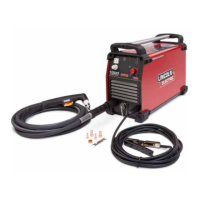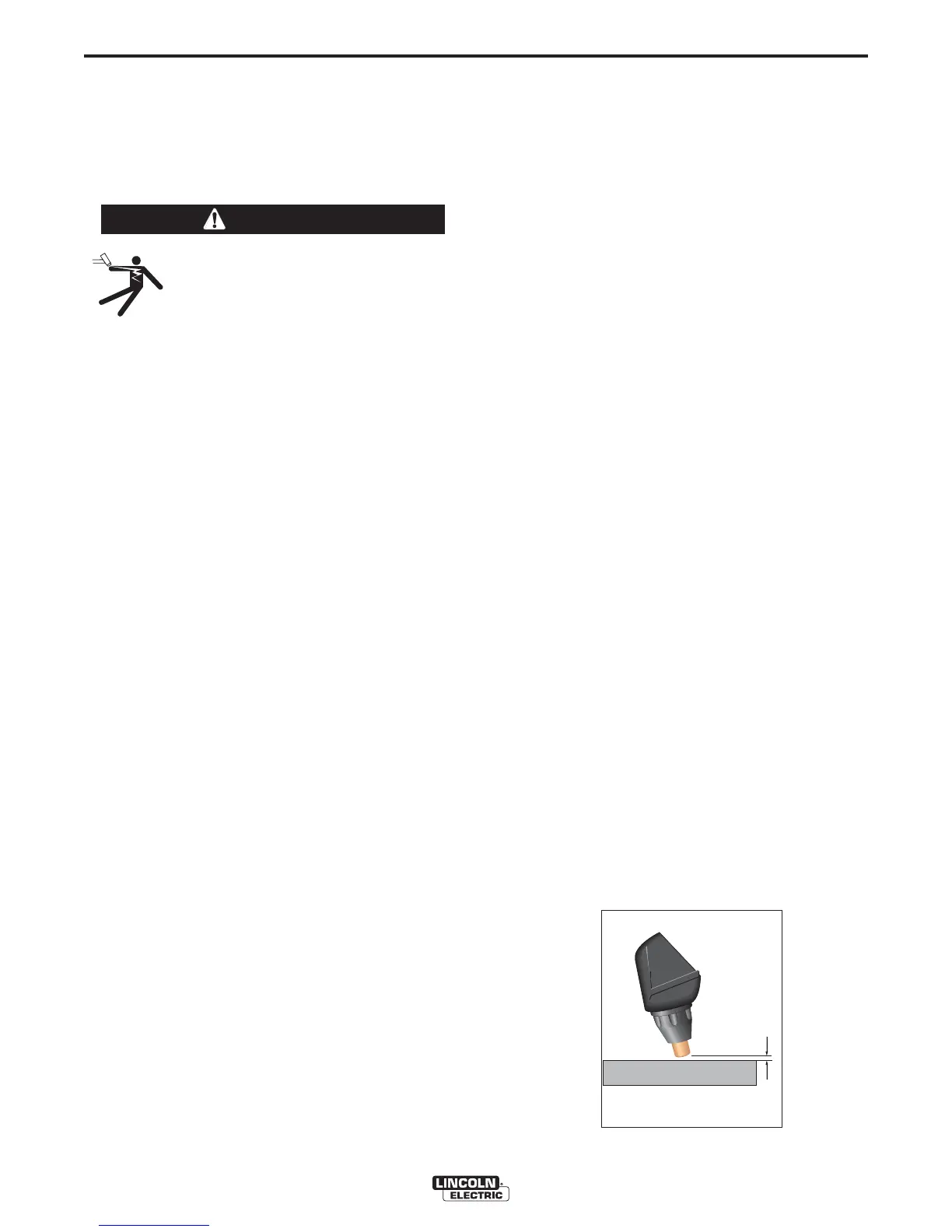

Do you have a question about the Tomahawk 1000 and is the answer not in the manual?
| Output Current Range | 20 - 1000 A |
|---|---|
| Input Amperage at Rated Output | 45 A |
| Rated Output | 1000 A |
| Duty Cycle | 60% |
| Protection Class | IP23 |
Details risks of electric shock and precautions for safe operation.
Explains dangers of fumes and gases produced during operation.
Warns about the dangers of arc rays and necessary protection.
Alerts to fire and explosion risks from cutting sparks.
Covers risks associated with compressed gas cylinders.
Outlines safety measures for electrically powered equipment.
Warns about potential injuries from the plasma arc.
Discusses potential health effects of EMF and mitigation.
Provides detailed technical specifications for the TOMAHAWK 1000 plasma cutter.
Lists essential safety warnings and guidelines for installation procedures.
Details how to connect the machine to the electrical power supply.
Explains conditions for operating the machine with engine driven generators.
Describes requirements for supplying compressed air or nitrogen.
Details how to connect the torch and work clamp.
Reinforces safety guidelines relevant to operating the plasma cutter.
Provides an overview of the TOMAHAWK 1000's capabilities and features.
Advises on preheat temperature requirements for specific materials.
Details the cutting capacity and duty cycle of the machine.
Discusses the expected lifespan of torch consumables and replacement.
Explains the function of various controls and indicators on the front panel.
Guides on how to perform the plasma cutting process.
Explains the plasma gouging process and technique.
Illustrates different torch setups for cutting and gouging.
Lists available optional accessories for the plasma cutter.
Details available replacement or optional plasma torches.
Refers to consumable parts needed for operation.
Outlines regular cleaning and inspection tasks for the machine.
Covers tasks performed at less frequent intervals.
Explains the machine's thermal protection system and indicators.
Provides instructions on how to effectively use the troubleshooting section.
Explains the meaning of various LED indicators on the machine.
Details specific error conditions and their resolutions.
Presents the electrical wiring schematic for the machine.